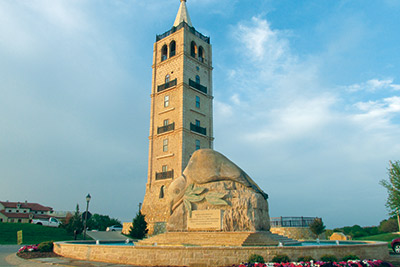
On April 19, 1995, at 9:03 a.m., a tremendous explosion destroyed the Alfred P. Murrah Federal Building in Oklahoma City and 168 people lost their lives; but as a country, we lost much more. No longer could we take for granted that something like this could never happen again. As a people, we would always wonder when it would again. We looked at our children differently and gave them extra hugs. Things could never be the same again.
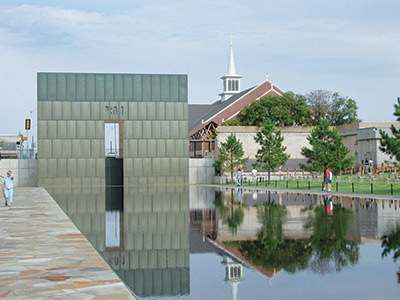
Photo 2. Oklahoma City Memorial
This happened in Middle America or what some consider Flyover country, and would leave its mark on the country as one of the worst domestic acts of terrorism to date. Many years later in 2001, the events known as “9/11” and the collapse of the Twin Towers would change this image and result in war.
Today, a reflection pool is part of the Oklahoma City Memorial, a solemn reminder of those events that allows the visitor to see his or her reflection as “someone changed by the events of that day.”
This destructive act took place roughly two hours from my home. Being a father, the loss of children weighed heavily on my heart. As a visitor to the site, I recall, my emotions were all over the place. I had gone as part of a group of men attending a Promise Keepers Rally held in the downtown area. It seemed that thousands stopped at the fountain to reflect on the events, to honor the victims, and to remember that which is important in life. On that day, for me, life took on new meaning in a personal way.
As you can imagine, the National Electrical Codehas requirements that govern electrical installations at these locations. Certain tragedies are, unfortunately, unavoidable due to the ill will of others. We can certainly do our best, however, to minimize or prevent senseless disasters from occurring by enacting strong Code adherence and educating as to its importance.
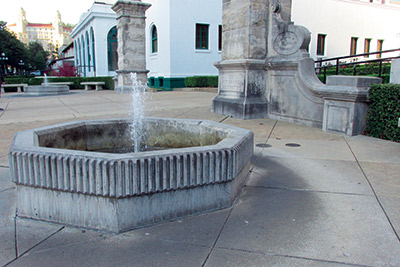
Photo 3. Fountain, Hot Springs, Arkansas. Millions of people have visited the waters found in Hot Springs National Park. Throughout Hot Springs there are numerous fountains and bath houses. Some people claim the waters from the fountains have therapeutic properties; and many of them use water bottles to “capture” this water for drinking purposes. But be careful at the fountains; you will find out quickly that the water is hot, and on a cold day, one can view the steam as it rises and quickly disappears.
Article 680 Swimming Pools, Fountains, and Similar Installations
I remember seeing my first fountain as a small child. This fountain was located inside the AQ Chicken House in Springdale, Arkansas. My mom would take us there when we would visit her brothers and sisters, and I would always ask for pennies to throw into the water. As I look back, this was an innocent time where wishes could be made with an expectation that they might happen. I can say that I never got any taller or got a chance at the NBA; but the fountain got a little richer from all those pennies from wish-making kids! This article deals with the construction and installation of electrical wiring at these locations.
Article 680 deals with these and other similar areas, such as the locations listed below:
- Swimming, wading, therapeutic and decorative pools
- Fountains
- Hot Tubs
- Spas
- Hydromassage Bathtubs
We also need to keep in mind that the term body of water, used throughout Part I, applies only to bodies of water detailed in the scope, unless it has been otherwise amended. In this article we are going to look specifically at fountains and reflection pools. To do so, we need to start at the definitions.
Definitions
Definitions are important to any project. The definitions we are interested in reside in 680.2. It is interesting to see that a reflection pool is located in the definition of a fountain.
Fountain. Fountains, ornamental pools, display pools, and reflection pools. The definition does not include drinking fountains.
Pool. Manufactured or field-constructed equipment designed to contain water on a permanent or semi-permanent basis and used for swimming, wading, immersion, or therapeutic purposes. (2011 NEC)
The term fountainapplies also to: ornamental pools, display pools, and reflection pools. Think about your Koi Pond tucked in the corner of your back yard. Have you ever considered it an ornamental pool? What about a display pool? What exactly is displayed at these pools? Reflection pools are familiar to many people; not only the reflection pool in Oklahoma City but also the reflection pool at the site of the former Twin Towers in New York City.
Interestingly enough, the code-making panelshad to take action on drinking fountains in the 1999 NEC. Language was placed into the definition specifically stating that drinking fountains were not included in the definition of fountains. It also made it clear that Article 680 did not apply to drinking fountains. This leads one to speculate that maybe an AHJ could have been trying to enforce the requirements found in Article 680 towards the drinking fountain.
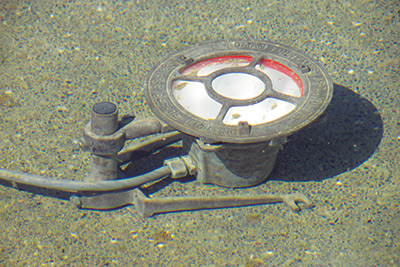
Photo 4. Fountain luminaire with cord. Overheating protection of the electrical equipment is necessary for electrical equipment that depends on submersion for safe operation. A low-water cut-off or other approved means shall be provided when the equipment is no longer submerged.
Article 680 Part V, Fountains
Part five is where we zoom in on the specific requirements for fountains. The provisions of Part I and Part V of the article shall apply to all permanently installed fountains as defined in 680.2. As one might expect, luminaires, submersible pumps, and other submersible equipment shall be protected by a ground-fault circuit interrupter, unless listed for operation at low voltage contact limit or less and supplied by a transformer or power supply that complies with 680.23(A)(2).
So, what is meant by the low voltage contact limitas discussed above? This definition was new for the 2011 NEC. Let’s review this term.
Low Voltage Contact Limit
A voltage not exceeding the following values:
(1) 15 volts (RMS) for sinusoidal ac
(2) 21.2 volts peak for non-sinusoidal ac
(3) 30 volts for continuous dc
(4) 12.4 volts peak for dc that is interrupted at a rate of 10 to 200 Hz
[Excerpt from 2011 NEC,680.2]
“The low voltage contact limit described in this definition is based on the wet contact limits specified in Tables 11(A) and 11(B) in Chapter 9. In prior editions of the Code, the use of isolated winding type transformers that provided a sinusoidal ac voltage not exceeding 15 volts was used as the low voltage operational threshold for underwater luminaires. Although the 15-volt limit in Article 680 was based on a transformer-type power supply, it applied to all low- voltage systems. Any luminaire operating at more than 15 volts was required to be protected by a ground-fault circuit interrupter.
“In addition to sinusoidal alternating current, this definition also identifies the maximum acceptable safe levels for other voltage systems. Depending on the system, this maximum level is either higher or lower than that considered safe for sinusoidal ac voltage. New technologies for underwater lighting that integrate power supplies other than the traditional isolated winding type transformer have been developed, and this definition and associated requirements in Article 680 ensure that those new power supplies can be safely integrated into the swimming pool environment.” [Excerpt from 2011 NEC Handbook]
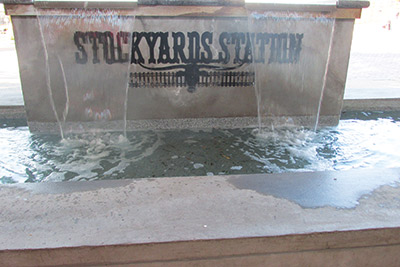
Photo 5. Sign in fountain, Fort Worth, Texas
Luminaires, Submersible Pumps and Other Submersible Equipment
The operating voltage for luminaires and submersible pumps and other submersible equipment is different. The operating voltage for supply circuits for luminaires shall not exceed 150 volts between conductors. The operating voltage for submersible pumps and other submersible equipment shall not exceed 300 volts or less between conductors.
Luminaires shall be installed in specific locations within these environments. Unless listed for above-water locations, the top of the lens shall be below the normal water level of the fountain. In the event that the lens is facing upward, it is to be adequately guarded to prevent contact by any person, or it is to be listed for use without a guard.
Nice to Know Info
Maximum Water Level. The highest level that water can reach before it spills out.
Note: Normal water level is different in each and every situation. As you might think, to define such a level would be impractical as each fountain or reflecting pool will be different. Therefore, it is recommended that you discuss the normal water level with the designer of the fountain before the project begins.
There is nothing that requires the installation of a luminaire in a pool of water; it is done by choice. Many luminaires are installed for aesthetic purposes to add to the enjoyment and tranquil feeling one might experience at the locations. Most generally, luminaires accentuate features found at that location.
The equipment located in fountains shall contain provisions for threaded conduit entries or shall be provided with a suitable flexible cord as required by 680.51(E). A maximum limit of 3.0 m (10 ft) has been mandated for the exposed cord within the fountain. Any cord located on the perimeter of the fountain shall be enclosed in an approved wiring method. An approved corrosive-resistant metal shall be used when metal parts are in contact with water. An example of a metal part that meets this requirement is brass.

Photo 6. Fountain in downtown Kansas City, Missouri
Equipment servicing is an important consideration when installing pool equipment. All equipment shall be removable from the fountain. This will allow for relamping of luminaires and for normal maintenance of equipment. Luminaires cannot be permanently embedded into the fountain structure so that water has to be removed or the fountain has to be drained in order to service the luminaires and equipment. All equipment that is to be part of a fountain shall be securely fastened in place or shall be inherently stable.
Nice to Know Info
What does “inherently stable” mean?
Inherent stability is often found throughout the aviation industry. It is the tendency of an aircraft to return to straight and level flight, when the controls are released by the pilot. Most aircraft are designed with this in mind and are said to be “inherently stable.” I guess that when applied to pool equipment, the equipment should return to its previous location and remain stable. Might there be an aviation guru involved with the NFPA process that got this term used here as well?
Receptacle Outlets Adjacent to Fountains
Fountains contain water. Water and electricity typically do not play well together. When we consider receptacles near fountains, we must keep this in mind. Ground-fault protection of these devices is necessary to ensure the safety of the user of the fountain. Any receptacle located within 6.0 m (20 ft) of the edge of the fountain shall be provided with GFCI-protection. This information can be found at 680.58.
Always remember to review the requirements for placement of equipment and other items associated with fountains. Code language dictates that the measurement for this equipment shall be made from inside the pool wall. Other code language from Article 680 for other situations will direct the installer to take the measurement from the outside of the pool wall. This requirment is located in 680.34. A slight oversight in reading and understanding these different requirements could be crucial to your receiving the final inspection results that make you happy.
Signs
Some fountains will be designed with signs in mind. Signs can take on many forms and fashions. The NEC deals with electric signs so not all signage will be affected by this language. Electric signs installed within a fountain or within 3.0 m (10 ft) of the fountain’s edge will be discussed next. Section 680.57(C) directs that “a fixed or stationary electric sign installed within a fountain shall be not less than 1.5 m (5 ft) inside the fountain measured from the outside edges of the fountain.”
In the event the sign is portable, we have two restrictions: (1) it shall not be placed within a pool or a fountain; and (2) it cannot be placed within 1.5 m (5 ft), measured horizontally, from the inside wall of a fountain.
A sign shall be grounded and bonded in accordance with 600.7. A disconnecting means conforming with both 600.6 and 680.12 shall be provided for a sign used with fountains.
Boxes and Enclosures
Boxes and enclosures are very important in a wet or damp location. These items will need to conform to 680.24 when used at a fountain. Each will need to be provided with threaded conduit entries or compressed glands and seals for cord entry. If the box or enclosure is to be submersible, it shall be constructed of copper, brass, or another approved corrosion-resistant material.
Section 680.52(B)(2)(a) requires a potting compound to prevent the entry of moisture for an underwater enclosure. The box or enclosure shall be firmly attached, per 680.52(B)(2)(b), to the fountain surface. If the box or enclosure is supported solely by conduits, the conduit shall be of copper, brass, stainless steel or another type of corrosion-resistant metal. Support shall be in accordance with 314.23(E) and (F).
Bonding and Grounding of Fountain
Do not take for granted the importance of grounding and bonding, which cannot be stressed enough in the installation process for the fountain. Bonding requirements are located at 680.53. The Informational Note further directs you to 250.122 for the sizing of these conductors that are attached from the metal piping systems to the equipment grounding conductor of the branch circuit.
Some equipment must be grounded. In 680.54, we find guidance that helps with this process. All electrical equipment — other than listed low-voltage luminaires not requiring grounding — located within the fountain or within 1.5 m (5 ft) of the inside wall of the fountain must be grounded. This also includes electrical equipment associated with the circulating system of the fountain, regardless of its proximity to the fountain.
Methods of grounding are discussed at 680.55(A). There are six code references that have applicable provisions for the fountain or reflection pool. In the event you have equipment supplied by a flexible cord, 680.55(B) needs to be consulted. All exposed non–current-carrying metal parts of electrical equipment that is supplied by a flexible cord shall be grounded by an insulated copper equipment grounding conductor that is an integral part of this cord. It shall be connected to an equipment grounding terminal located at the supply junction box, transformer enclosure, power supply enclosure, or other enclosure.
Cord- and Plug-Connected Equipment
We can’t escape cord- and plug-equipment. For guidance on installation practices, turn to 680.56(A) through (D). Maintenance of electrical equipment dictates that the power supply cords allow for this type of flexibility. Hence, all power supply cords shall be protected by ground-fault circuit interrupters.
There are also requirements that dictate the choice for cord types when used in fountains and reflection pools. If immersed in or exposed to water, a flexible cord shall be of the extra-hard usage type. This is typically designated in Table 400.4. The flexible cord shall also be a listed type with a “W” suffix.
A suitable potting compound is required for the end of the flexible cord jacket and for the flexible cord conductor that are intended to terminate within the equipment. This will prevent the entry of water into the equipment through the cord or its conductors. To prevent deteriorating effects from the water that may enter into the equipment, the ground connection shall be treated as well.
All flexible cord terminations shall be permanent, except for devices that need to be removed for maintenance, repair, or storage. This could include grounding-type attachment plugs and receptacles. Some of this equipment will be removed for storage and protection from the elements. Fountains are located at inside and outside locations throughout the world. In the event of freezing conditions, some of the equipment could be ruined. Removal of these items is essential to protect the equipment from these weather-related effects.
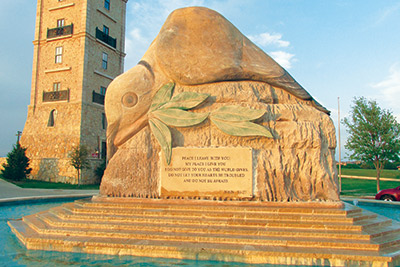
Photo 7. Spiritual Fountain, McKinney, Texas
In Conclusion
I did not install the electrical equipment or inspect the fountain where I currently live. I am taking for granted that each person involved with this project has installed it as prescribed by the rules found within the National Electric Code. I think that if we all remembered how it could affect the end user, we would always have code-compliant projects. As stated earlier, water and electricity do not play well together. Enter a human life and things could go horribly wrong. It does not take a misguided individual blowing up a building to affect our daily lives; an unintentional mistake or oversight can have the same effects. Code requirements are important. Electrical installers are important. Electrical inspectors are important. Your loved ones are important to you! Who knows when they might visit or get into that pool!







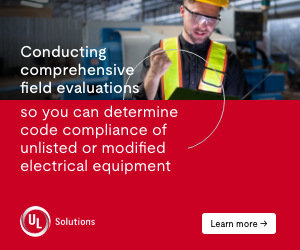

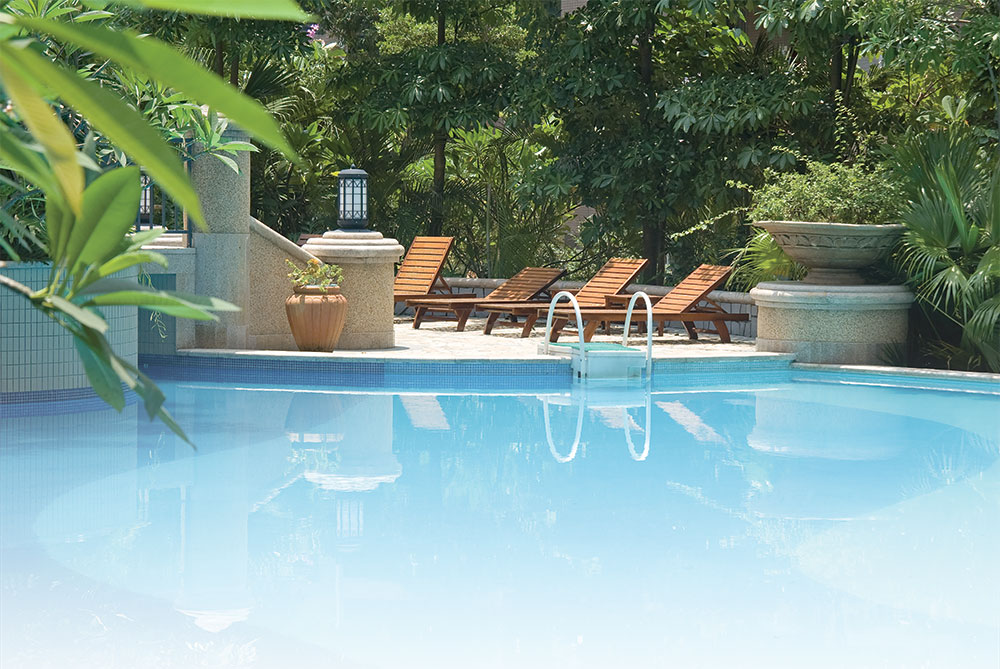
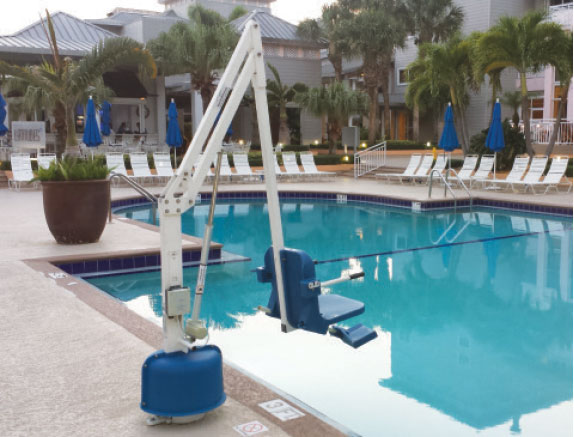
Find Us on Socials